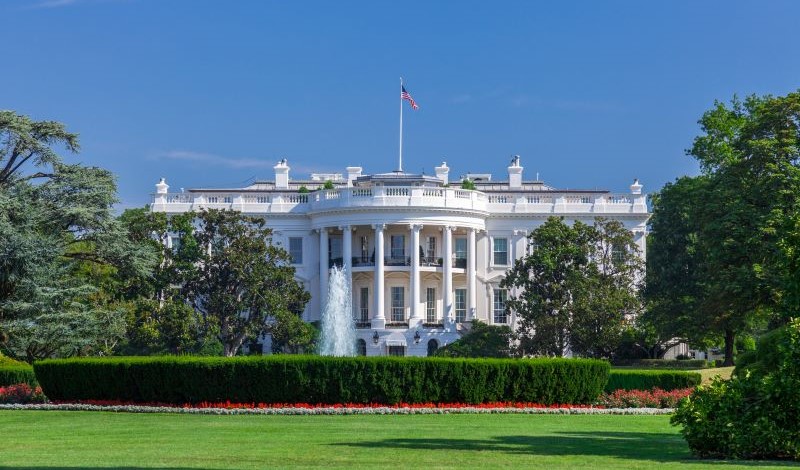
A new executive order may eliminate the independence of independent regulatory agencies.
More than a century ago, President Grover Cleveland signed the Interstate Commerce Act of 1887 into law and ushered in a new form of regulation and regulatory oversight—the independent regulatory agency. Over the next 137 years, the independent regulatory agency ecosystem grew and expanded, with independent regulatory agencies having jurisdiction over some of the most important—and often controversial—policy areas in the federal government.
On February 18, President Donald J. Trump signed Executive Order 14,215, titled “Ensuring Accountability for All Agencies,” which imposes a series of Administration limits on independent agencies, intended to make them more directly accountable to the President through the Office of Management and Budget (OMB). This executive order raises the question whether the nearly 140-year era of independent regulatory agencies has come to an abrupt end.
Historically, the U.S. Congress has authorized independent regulatory agencies to regulate in specific areas while structuring them to be governed by bipartisan multi-member collegial boards or commissions with members who have staggered, overlapping terms. The U.S. Senate confirms the members for a term of years—often five—and the agencies’ governing statutes generally provide for their removal only upon just cause. Some independent regulatory agencies, such as the Federal Trade Commission, have been granted independent litigating authority by Congress, meaning that they can bring or defend actions in federal court independent of the U.S. Department of Justice. The agencies are typically headed by a chair who is designated by the President. Taken as a whole, the multi-member, bipartisan design of independent regulatory agencies, in theory, provides a politically insulated and stable expert regulatory body for affected industries.
Executive Order 14,215 tries to balance the statutory independence intended by Congress with the Trump Administration’s stated intent to exercise more direct policy control over independent regulatory agencies. The order directs the head of OMB to establish “performance standards and management objectives” for agency heads. OMB must also exercise control over agency “obligations” and “consult” with agency chairs to “adjust such agencies apportionments … to advance the President’s policies and priorities.” The order requires agency chairs to “regularly consult with and coordinate policies” with OMB, the White House Domestic Policy Council and the White House National Economic Council, and create a White House liaison at the agency. And the order states that “no employee of the executive branch acting in their official capacity may advance an interpretation of the law … that contravenes the President or the Attorney General’s opinion.” The final provision contains both a savings clause that provides that the order does not “impair or otherwise affect … the authority granted by law to an executive department, agency or the head thereof” and that the order “shall be implemented consistent with applicable law.”
Any analysis of the effect of Executive Order 14,215 must begin with its drafters’ clear understanding of the independent regulatory agency legal framework—which is that the order’s coercive provisions, if they are to be seen as such, apply only to agency chairs. None of the provisions bind the agency itself. Rather, they just purport to impact what the chairs can do in running their agencies—what positions they can direct agency staff to take, what expenditures they can oversee and, most interestingly, what positions they can direct the agency to take in litigation. And the savings clause in the order makes clear that these directives are to be read in light of existing law. This delicate structural balance begs the question of whether—in light of Executive Order 14,215—independent regulatory agencies are still independent? I see both legal and practical answers to this question.
From a legal standpoint, the strictures of Executive Order 14,215, to the extent they are binding, bind only the chair. Although the agency can only take actions following a vote of the members or delegated to the chair, the chair has scheduling power and presumably could not schedule votes on matters contrary to the Trump Administration’s wishes. Would the influence presumed by Executive Order 14,215 lead a court to find that the agency is not truly independent? Such a finding is certainly possible. But finding the type of decision that could be challenged as being a product of a lack of independence, and then offering proof that a specific decision should be vacated because it was tainted by political interference, would be difficult. A plaintiff’s challenge to an agency action on these grounds would depend on the facts, circumstances, and perhaps even the vote on the specific matter. And any challenge would need to overcome the presence of Executive Order 14,215’s savings clause and be a function of the specific actions of the members of the agency. I think the legal answer is murky.
The practical answer is much clearer: Agency chairs will be careful to run their agencies in a way that is consistent with the policies and priorities of the administration in general and the President who appointed them in particular. Agency chairs are aware that the Trump Administration has used its appointment power to further its policy and political aims and understand that a President’s decision to designate an independent board member as chair is based on the expectation that the appointed individual will support and implement the administration’s political and policy goals. Chairs whose agencies act contrary to the administration’s wishes do so at their political peril. And, although this perhaps is implicitly true in every administration, the political expectations of agency chairs are being made explicit in the Trump Administration.
So, whether or not Executive Order 14,215 results in a U.S. Supreme Court decision that calls into question an independent regulatory agency’s independence, the ultimate goal of Executive Order 14,215 has likely already been achieved—agency chairs who want to remain as chair will run their agencies in a way that is politically aligned with the President’s views. Does that express alignment mean an independent regulatory agency will no longer be legally independent? Only time will tell.
This essay is part of a series, titled “President Trump’s First 100 Days of Deregulation.”




